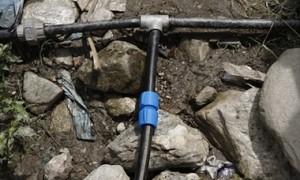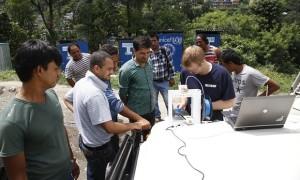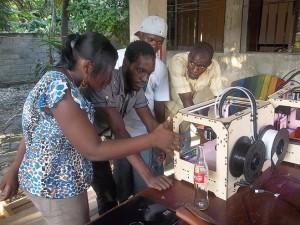 In April of 2015, a massive earthquake struck Nepal. Registering 7.8 on the Richter scale, the quake killed over 9,000 people and injured more than 23,000. Less than a month later, an aftershock with a 7.3 magnitude hit and killed over 200 people. The effects of a disaster like that can last for years, particularly in poverty-stricken nations where resources are already thin. More than half a year later, relief efforts still continue.
In April of 2015, a massive earthquake struck Nepal. Registering 7.8 on the Richter scale, the quake killed over 9,000 people and injured more than 23,000. Less than a month later, an aftershock with a 7.3 magnitude hit and killed over 200 people. The effects of a disaster like that can last for years, particularly in poverty-stricken nations where resources are already thin. More than half a year later, relief efforts still continue.
Foreign aid, while it does plenty of good, is plagued by its own problems. It’s expensive for supplies to be flown in from other countries, and those supplies don’t always get to the people who need them most. With the amount and size of disasters, both natural and man-made, increasing, relief agencies are overstressed and understaffed, which sometimes results in problems being overlooked.
 Andrew Lamb and Mark Mellors of Field Ready noticed one such problem when visiting a camp in the central Nepalese town of Bahrabise in September. The camp houses about 200 families left homeless after the quake, and some of the water pipes flown in as part of the relief effort were missing washers and fittings, causing them to leak. Without the proper supplies to repair them, the pipes were badly patched with tape and plastic bags. That night, Mellors designed a water fitting on his laptop, and the next day they returned to the camp, hooked a 3D printer up to the battery of their Land Rover, and within two hours the fitting was printed. They attached it to one of the pipes, and the leak stopped. Visiting Bahrabise again this month, Lamb was able to see that the fitting was still in action.
Andrew Lamb and Mark Mellors of Field Ready noticed one such problem when visiting a camp in the central Nepalese town of Bahrabise in September. The camp houses about 200 families left homeless after the quake, and some of the water pipes flown in as part of the relief effort were missing washers and fittings, causing them to leak. Without the proper supplies to repair them, the pipes were badly patched with tape and plastic bags. That night, Mellors designed a water fitting on his laptop, and the next day they returned to the camp, hooked a 3D printer up to the battery of their Land Rover, and within two hours the fitting was printed. They attached it to one of the pipes, and the leak stopped. Visiting Bahrabise again this month, Lamb was able to see that the fitting was still in action.
“We were thrilled because it’s one of our proofs of concept: this idea of making useful things in camps for internally displaced people [IDP] is fundamental,” says Lamb. “It was the first time – at least that we’re aware of – that this has been done: that you 3D print a sort of proper water fitting, rather than having to make an improvised one, in an IDP camp. It’s that process of identifying the need, doing the design and then printing it out and fitting it out – and doing all that in less than 12 hours in a remote area. It’s a pretty important step forward, I think, for the use of this kind of technology.”
Field Ready operates differently than most relief agencies, in that they focus on creating sustainable solutions right at the sources of problems, rather than relying on supply chains that are prone to delays and often don’t provide lasting solutions. By bringing technology like 3D printers into the field, the organization is able to address issues immediately and in a lasting way, creating a cure rather than a Band-Aid.
 Lamb believes that if other agencies were to adopt similar technology-oriented, field-based methods, billions of dollars could be saved each year on logistics alone. The majority of the money being spent on foreign aid, he says, is used for getting supplies from their origins to their destinations.
Lamb believes that if other agencies were to adopt similar technology-oriented, field-based methods, billions of dollars could be saved each year on logistics alone. The majority of the money being spent on foreign aid, he says, is used for getting supplies from their origins to their destinations.
Field Ready is also working on establishing the means for people in disaster-stricken areas to adopt technology themselves. Currently, they are working with World Vision to create an innovation lab in Nepal, as well as creating an open-source online supplies catalog where they will post their designs for anyone to download.
“One of the things that we’re very keen on is that we essentially do ourselves out of a job,” says Lamb. “It’s probably one of the first things you learn when you’re at school and you start learning about charity and there’s this basic thing that what you should be doing is not just giving a man a fish and all that rubbish … And then there’s a phase where you think that’s naive and the world doesn’t work that way.”
 Field Ready’s approach does work that way, however, and Lamb hopes that other aid organizations will take notice and begin using the same methods.
Field Ready’s approach does work that way, however, and Lamb hopes that other aid organizations will take notice and begin using the same methods.
“What we’d really like to see is the major aid agencies adopting this technology themselves,” he continues. “We’re not being precious about the existence of our organisation. What we want to ensure is that the innovation is successful because we think it can significantly improve the effectiveness of disaster response.”
Discuss this article in the 3D Printing Disaster Relief forum thread on 3DPB.com.
Subscribe to Our Email Newsletter
Stay up-to-date on all the latest news from the 3D printing industry and receive information and offers from third party vendors.
You May Also Like
Profiling a Construction 3D Printing Pioneer: US Army Corps of Engineers’ Megan Kreiger
The world of construction 3D printing is still so new that the true experts can probably be counted on two hands. Among them is Megan Kreiger, Portfolio Manager of Additive...
US Army Corps of Engineers Taps Lincoln Electric & Eaton for Largest 3D Printed US Civil Works Part
The Soo Locks sit on the US-Canadian border, enabling maritime travel between Lake Superior and Lake Huron, from which ships can reach the rest of the Great Lakes. Crafts carrying...
Construction 3D Printing CEO Reflects on Being Female in Construction
Natalie Wadley, CEO of ChangeMaker3D, could hear the words of her daughter sitting next to her resounding in her head. “Mum, MUM, you’ve won!” Wadley had just won the prestigious...
1Print to Commercialize 3D Printed Coastal Resilience Solutions
1Print, a company that specializes in deploying additive construction (AC) for infrastructure projects, has entered an agreement with the University of Miami (UM) to accelerate commercialization of the SEAHIVE shoreline...






























